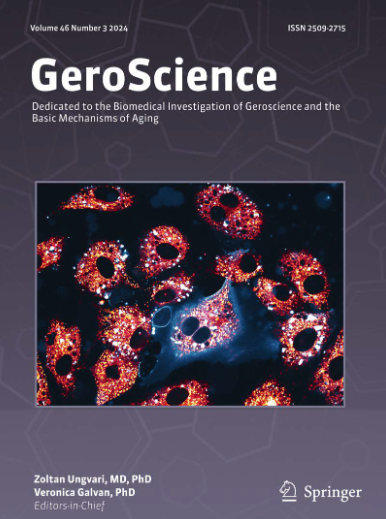Outdoor light at night and neuropsychiatric symptoms in dementia.
IF 5.3
2区 医学
Q1 GERIATRICS & GERONTOLOGY
引用次数: 0
Abstract
There is growing interest about the relation between exposure to artificial light at night (LAN) and mental health. This study aims, for the first time, to explore the association between LAN exposure and neuropsychiatric symptoms in individuals with dementia, investigating its role as a potential environmental risk factor. We collected data about 150 patients with dementia in Modena, Italy. We assessed LAN exposure using satellite imagery, while neuropsychiatric symptoms were evaluated through the Neuropsychiatric Inventory (NPI), a caregiver-administered questionnaire measuring the presence and severity of psychiatric symptoms. We used logistic regression models to examine associations between LAN exposure and neuropsychiatric features. Higher LAN exposure was associated with increased risk of psychiatric symptoms, particularly in the domains of psychosis and sleep disturbances. Specifically, individuals exposed to LAN levels above the median (LAN median = 26.32 nW/cm2/sr) demonstrated an elevated risk of delusions, hallucinations, and sleep disturbances (OR = 2.09, 95% CI 0.03-4.25), compared to those in the "below the median" category. Associations with other symptom domains, such as apathy and affective disturbances, showed weaker associations. Our findings indicate that artificial nighttime light exposure may negatively impact the mental well-being of individuals with dementia, potentially exacerbating psychotic symptoms and sleep disturbances. However, caution is warranted when interpreting these results due to the limited sample size and the possibility of unexamined residual confounding.夜间户外光线与痴呆的神经精神症状
人们对夜间接触人造光与心理健康之间的关系越来越感兴趣。本研究旨在首次探讨LAN暴露与痴呆患者神经精神症状之间的关系,探讨其作为潜在环境风险因素的作用。我们收集了意大利摩德纳150名痴呆症患者的数据。我们使用卫星图像评估局域网络暴露,同时通过神经精神量表(NPI)评估神经精神症状,NPI是一份由护理人员管理的问卷,测量精神症状的存在和严重程度。我们使用逻辑回归模型来检验局域网暴露与神经精神特征之间的关系。较高的局域网络暴露与精神症状风险增加有关,特别是在精神病和睡眠障碍方面。具体而言,与“低于中位数”的个体相比,暴露于LAN水平高于中位数(LAN中位数= 26.32 nW/cm2/sr)的个体表现出妄想、幻觉和睡眠障碍的风险增加(OR = 2.09, 95% CI 0.03-4.25)。与其他症状域的关联,如冷漠和情感障碍,显示出较弱的关联。我们的研究结果表明,人工夜间光照可能会对痴呆症患者的心理健康产生负面影响,可能会加剧精神病症状和睡眠障碍。然而,由于样本量有限和可能存在未经检验的残留混淆,在解释这些结果时需要谨慎。
本文章由计算机程序翻译,如有差异,请以英文原文为准。
求助全文
约1分钟内获得全文
求助全文
来源期刊

GeroScience
Medicine-Complementary and Alternative Medicine
CiteScore
10.50
自引率
5.40%
发文量
182
期刊介绍:
GeroScience is a bi-monthly, international, peer-reviewed journal that publishes articles related to research in the biology of aging and research on biomedical applications that impact aging. The scope of articles to be considered include evolutionary biology, biophysics, genetics, genomics, proteomics, molecular biology, cell biology, biochemistry, endocrinology, immunology, physiology, pharmacology, neuroscience, and psychology.
 求助内容:
求助内容: 应助结果提醒方式:
应助结果提醒方式:


